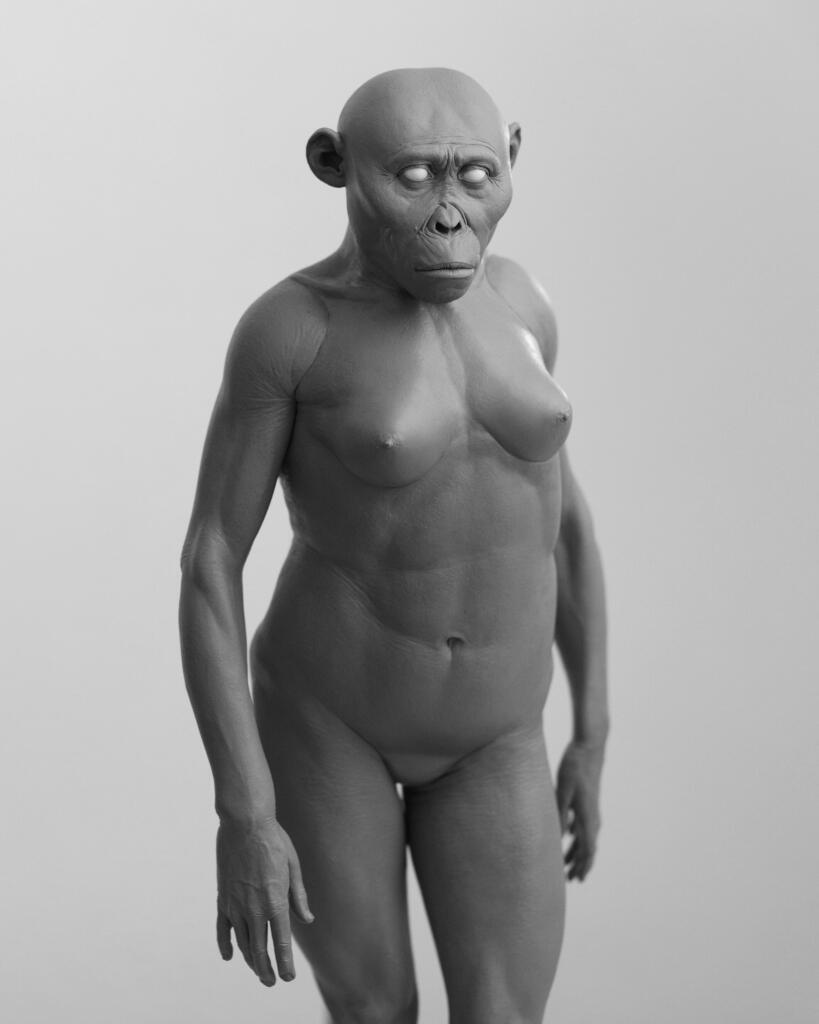Getting your Trinity Audio player ready...
Recent technological advancements and genetic analysis suggest that Lucy may have been less hairy or even naked, challenging popular depictions of her with thick fur covering most of her body.
A 3.2-million-year-old fossilized Australopithecus afarensis hominin, Lucy was discovered 50 years ago. Her skeleton is roughly 40% complete, covering 47 bones. The discovery provided insights into our ancestral origins.
While Lucy's true appearance remains uncertain, her representations often reveal more about modern cultural influences, biases, and assumptions than her actual physical characteristics.
A reconstruction of Lucy who lived 3.2 million years ago
Research indicates that early humans and their ancestors likely remained naked for over 2.5 million years before adopting clothing, driven by factors like thermoregulation, sexual attraction, protection against parasites, and social behaviors. The loss of body hair, the eventual adoption of clothing, and the development of shame were influenced by evolutionary processes, brain development, social-cultural factors, and pair-bonding strategies for parental care and monogamy.
Nudity is a social construct with varying perceptions across cultures and history. The distinction between nakedness and the nude is debated by art critics and scholars, influencing the understanding of nudity in artistic representations.
Modern depictions of Lucy often reflect societal biases, historical assumptions about motherhood and relationships, and the complexities of visualizing our distant ancestors.
A new approach to the visual reconstruction of hominins, exemplified by the sculpture "Santa Lucia," aims to avoid perpetuating misconceptions and addresses nudity in a nuanced manner, challenging idealized representations of Lucy. Modern culture influences depictions of historical figures like Lucy, reflecting assumptions about gender, relationships, and societal norms and beliefs. Artists and scientists have attempted to reconstruct Lucy in ways that align with these norms.
This article was written in collaboration with Generative AI news company Alchemiq
Sources: Live Science, Scientific American, The Conversation, Science Times, The Shillong Times, SheThePeople.tv, and co.nz.





